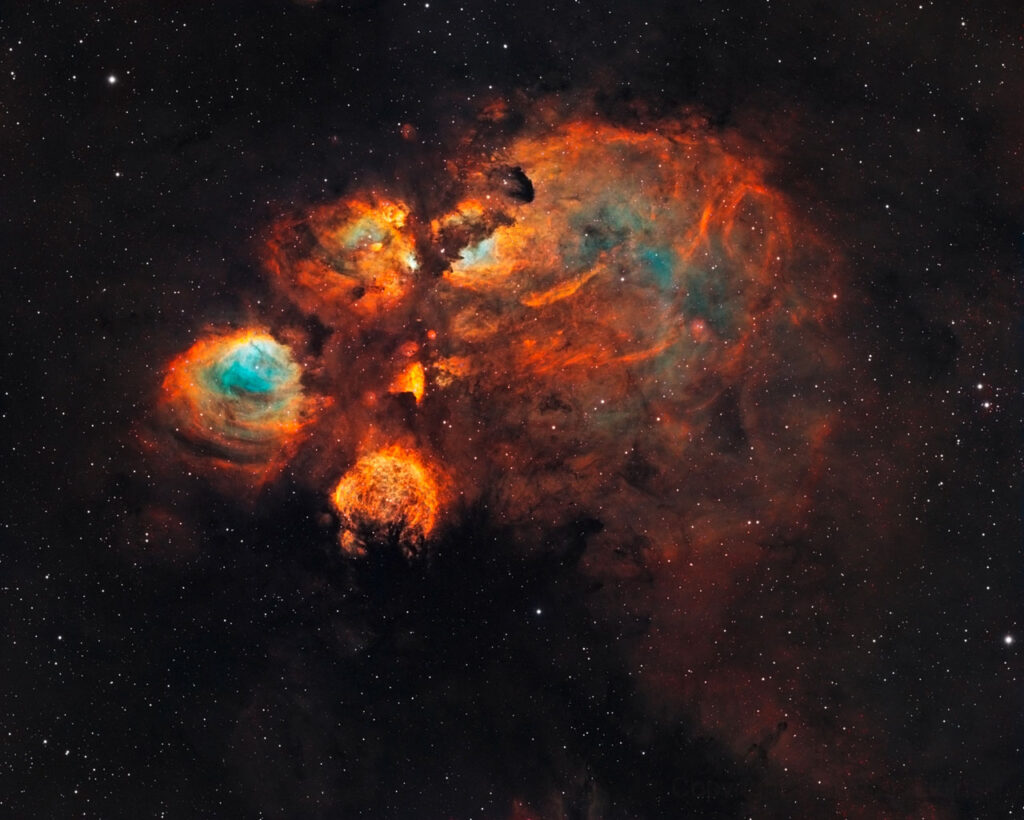Main image https://esahubble.org/projects/fits_liberator/fitsimages/slawomir_lipinski_05/
The Cat’s Paw Nebula, also known as the Bear Claw Nebula, is an emission nebula in Scorpius. The nebula is about 50 light years across and lies at an approximate distance of 5,500 light years from Earth. It is one of the nearest H II regions to the solar system. It has the designation NGC 6334 in the New General Catalogue.
The large glowing cloud earned the nickname Cat’s Paw because it looks like a gigantic pawprint of a cat. The nebula is a popular target of study as a nearby example of a vast, very active stellar nursery.
NGC 6334 is a large star forming region, covering an area in the night sky slightly larger than the full Moon. It is one of the most active stellar nurseries producing massive stars in the Milky Way Galaxy. The hot young stars embedded in the nebula are responsible for its glow. The stars are each roughly 10 times as massive as the Sun and were formed relatively recently, within the last few million years.
NGC 6334 may contain tens of thousands of stars, many of them concealed deep within the nebula’s dust. The nebula also contains a vast supply of material needed for star formation, roughly equal to a mass of 200,000 Suns .
A study conducted by researchers from the Harvard-Smithsonian Center for Astrophysics and released in 2013 suggests that the Cat’s Paw Nebula may be undergoing a stellar “baby boom,” a period of rapid star formation.
https://www.constellation-guide.com/cats-paw-nebula/

https://www.nasa.gov/image-feature/jpl/newborn-stars-blow-bubbles-in-the-cats-paw-nebula
Papers and publications
This review gives the state-of-art knowledge of high mass star formation gained from observational surveys from millimeter to near-infrared wavelengths. In particular a giant molecular cloud (NGC 6334) is taken as an example of a study of high mass star formation regions including Herschel, Spitzer and near-infrared data. https://pos.sissa.it/331/029/pdf
Dust polarized emission observations of NGC 6334 BISTRO reveals the details of the complex but organized magnetic field structure of the high-mass star-forming hub-filament network. https://arxiv.org/pdf/2012.13060.pdf

